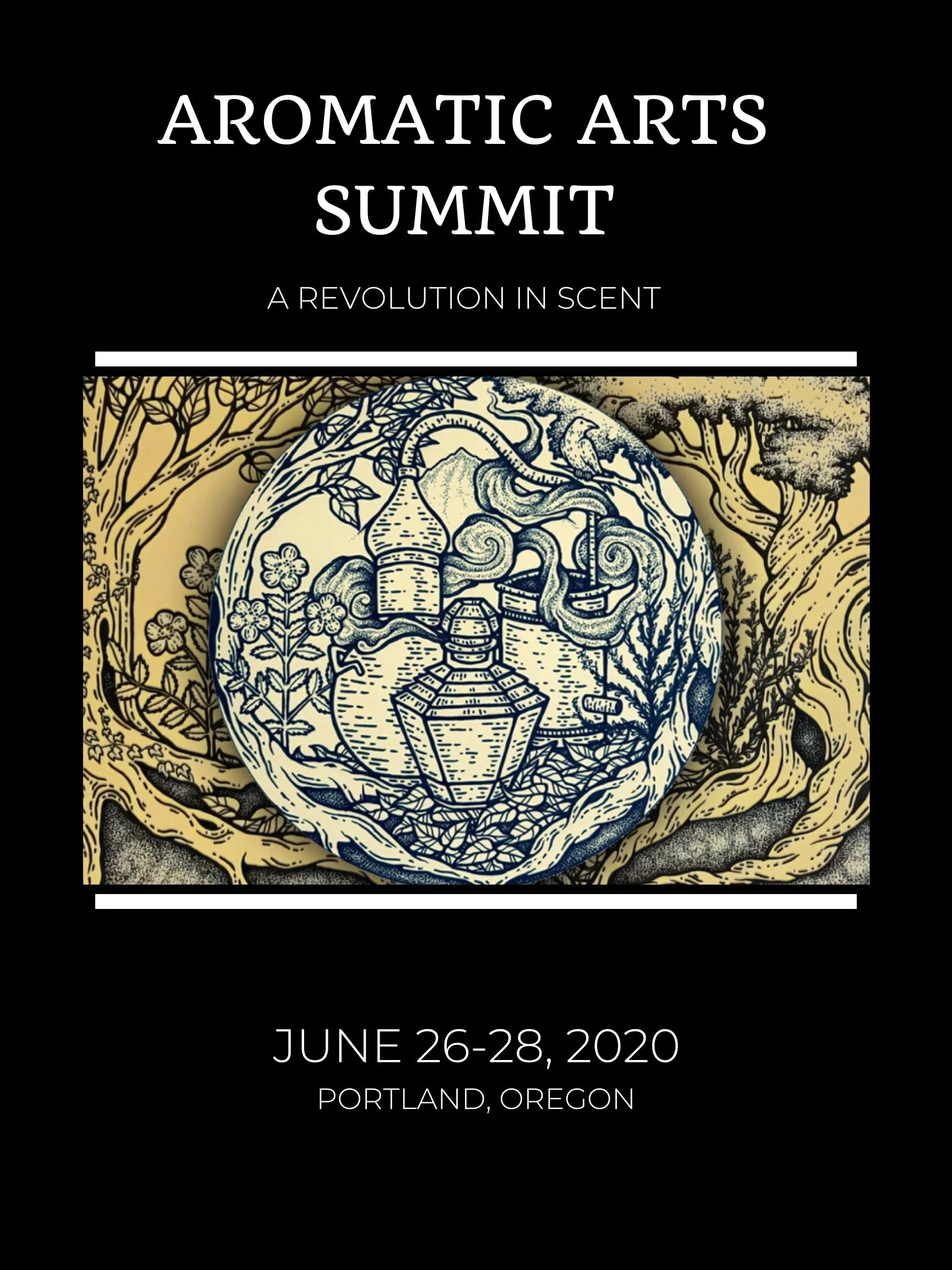Aromatic Plants and the Adrenals
Imagine you are a prehistoric cave dweller when all of a sudden a mountain lion enters your home. From a state of rest, you suddenly become intensely alert and your body quickly martials all its forces to manage the threat. This is do or die- a time to either fend off the lion or escape from its attack- fight or flight.
Evolutionarily all creatures are wired to manage threats in their environment. When humans experience a threat, we shift from a baseline parasympathetic “rest and digest” state to a sympathetic “fight or flight” state. Physiologically, our hypothalamus activates the pituitary gland to signal the adrenals, tiny walnut glands that sit atop the kidneys. When we experience a strong threat to our sense of safety, this complex known as the HPA axis [1] goes into high gear, and the adrenals release adrenaline and cortisol to help the body to mount a defense.
The Adrenals
Lets take a closer look at these “stress” hormones and what they do. Adrenaline causes the eyes to dilate and the heart rate and blood pressure to increase. The heart is now pumping blood more rapidly and intensely to the visceral muscles that are engaged in fight or flight.
The digestive system is also impacted by the sympathetic nervous system response. Because safety and fighting off a threat is paramount, the body no longer needs to focus on digestion. Saliva production is curtailed, blood flow to the gut reduces, motility ceases and digestive enzyme secretion is affected.
Finally cortisol is released and has various effects. On a short term level, cortisol reduces inflammation in the body so that the creaky old person in the back of the cave can feel less pain and get up and run or fight. Cortisol also causes gluconeogenesis, pulling sugar from fat cells to make energy available in the blood stream for fleeing or fighting. [2]
On a short term level, these neurobiological adaptations to a threat are extremely useful. But if we fast forward to modern times, we live in an age where many of us are experiencing high levels of ongoing stress that keep us in a regular state of sympathetic nervous system overdrive. From a tough work environment to poor relationships, to poverty, oppression and living in deeply challenging times, many of us experience a constant feeling of stress and threat to our sense of safety.
That constant state of stress leads to the over secretion of adrenal stress hormones. That same adrenaline and cortisol that are so useful in the short term against threats, become deeply challenging to our emotional and physical health over the long term. Heightened heart rate and blood pressure can lead to heart disease. Poor digestion can lead to a host of health problems such as indigestion, ulcers, IBS and leaky gut. Excessive cortisol production can lead to a dysregulated immune system. Because cortisol impairs an immune system response to inflammation, we can develop poor immune function and systemic inflammatory problems that can lead to greater colds and flus, autoimmune complaints and worsening general health. Cortisol can also lead to blood sugar imbalances and the potential for diabetes. [3]
Deep Freeze
I have mentioned fight or flight, but l also want to mention the freeze response. When a threat is overwhelming and there is no chance to escape or way to fight one’s way out, we will turn to one of our oldest evolutionary adaptations to a threat- freezing. [4]
We see this regularly on National Geographic specials where a gazelle flees a cheetah chasing it across the plains. At the last second the gazelle freezes and lays down. Freezing likely has two ancient reasons for occurring. It may throw a predator off and act as a defense measure so that a predator leaves its prey alone. But it is also likely a preparation for severe physical and emotional anguish and allows the prey to dissociate from the pain of what is happening.
Consider a child who is an abusive household where a parent is often erratic, angry and abusive. The child cannot fight or escape and may start to freeze and dissociate. This neurological pathway of freezing in the face of a threat may follow the child into adulthood and forms the basis for the diagnosis of Complex PTSD (C-PTSD) that includes a general feeling of loss of trust as well as regular dissociative states. [5]
That freeze state also translates into rigidity in numerous systems in the body. From muscular rigidity to gastro-intestinal immobility to circular ruminative thinking patterns to restricted/held breath, freezing causes emotional and physical repercussions that are often persistent.
In Come the Plants
Knowing all this, how do we work with plants to help us regulate our HPA axis and shift to a more parasympathetic dominant relaxed state?
There are various answers to this but lets start by looking at aromatic plants and how they can play a deeply important role in strengthening resilience and reducing heightened stress responses. The core strength of aromatic plants is that they help improve flow. What I mean by this is that where ever there is stuckness, rigidity, tightness and cramping, aromatic plants will help open, release, disperse and relax different tissue states.
So for example, stomachic digestive nervines can both help relax the nervous system while also improving digestive motility and enzymatic secretions. This is extremely important for those who have been damaged by long term stress and trauma. Chamomile, lemon balm and holy basil all have the ability to improve digestive motility while calming and regulating the nervous system to manage stress better. Taking herbal infusions of these herbs can help offset the challenges of an overtaxed adrenal system as well as poor digestive function due to stress. [6,7,8]
Aromatic plants can help act as an antidote to “freeze states” because of their ability to improve “flow”. Aromatic plants like eucalyptus and tea tree help open the bronchioles and allow for greater ease in respiration. Plants like elder, mint and yarrow help open the skin pores to allow the body to disperse sweat. Carminative aromatics such as rosemary, thyme, oregano and sage help improve gut motility and enzymatic secretions that improve digestion. Aromatic antispasmodics like Kava and Jamaican Dogwood can help calm the nervous system and reduce muscle tension related to the freeze response. [9]
Externally a number of aromatic plants help calm, relax and disperse these stuck trauma states. Hydrosols and oils of lavender, chamomile and neroli all have relaxing and clearing qualities, helping to shift us out of frozen states and help us feel less stuck and tight. [10] Many herbs used traditionally as smudge or smoke medicine have clearing, dispersing and grounding qualities. From frankincense to copal, sweetgrass and western red cedar, these aromatic resins and plants all help calm, open, disperse and relax a tense nervous system.
This is deeply important in the field of trauma work, where emotional and physical rigidity is common. Aromatic plants are useful because many of them are gentle and do not force a quick change in mood or cause strong psychoactive effects. This is key because many trauma sufferers cannot handle interventions that cause dramatic changes to their defense systems. Instead, anything that threatens these defensive rigid states can cause the sufferer to redouble their physical and emotional efforts to protect with greater rigidity. Gentle aromatics help nudge and softly open without threatening the internal safety of the participant.
Perhaps the most important way to work with folks who are experiencing regular trauma flares and heightened levels of stress is to work experientially with aromatic plants for inducing greater states of calmness and resiliency. Significant research has been done in the area of Forest Bathing, the idea of taking people to the forest to smell and take in the forest environment. Significant improvement has been seen in areas of stress reduction, high blood pressure, heart rate and anxiety. Taken in passively via breath, aromatic constituents known as phytoncides have been shown to reduce cortisol levels. [11]
Group work with aromatic plants can be incredibly helpful not only for inducing states of greater ease, openness and calmness, but also for increasing social bonding. From garden therapy, ecotherapy to doing hands on herbal classes, group work with aromatic plants increases social and individual resiliency. [12] Trauma and heightened stress puts us on high alert and makes it more challenging to trust and socially connect. The pathway back to feeling relaxed, strong and open with good boundaries is often a slow road. Developing healthy, safe interpersonal connections is a large part of the journey. Plants can act as deep allies in mediating that path back towards wholeness.
Conclusion
When we consider adrenals, its key to understand why these small glands are overtaxed in modern society. Stress, trauma and oppression can cause an ongoing “allostatic load” that keeps us in a regular heightened sympathetic nervous system state. Physically over time we can experience greater rigidity and a host of health complaints if this state is persistent. Aromatic plants are some of the most important allies in healing those various complaints as well as improving resiliency so that we aren’t easily triggered into flares of sympathetic dominance.
On a larger level, the direct stressors that are plaguing us need to be addressed. Today it is not the mountain lion. Its the mean boss, the challenge of paying bills, politics, oppression, poverty and isolation from the natural world. As we work to try and solve those larger societal problems, plants can teach us how to stay strong, resilient and flowing; to manage the myriad stressors that come our way.
References:
1 Sean Smith, (Dec 2006) The role of the hypothalamic-pituitary-adrenal axis in neuroendocrine responses to stress, retrieved from https://www.ncbi.nlm.nih.gov/pmc/articles/PMC3181830/
2 David Goldstein, (Mar 2010) Adrenal Responses to Stress, retrieved from https://www.ncbi.nlm.nih.gov/pmc/articles/PMC3056281/
3 Bruce S McEwen, (Apr 2009) Central effects of stress hormones in health and disease: understanding the protective and damaging effects of stress and stress mediators, retrieved from https://www.ncbi.nlm.nih.gov/pmc/articles/PMC2474765/
4 Leon Seltzer, (Jul 2015) Trauma and the Freeze Response: Good, Bad, or Both?, Psychology Today, retrieved from https://www.psychologytoday.com/us/blog/evolution-the-self/201507/trauma-and-the-freeze-response-good-bad-or-both
5 Cloitre, Garverty, Weiss, Carlson, Bryant, (Sep 2014) Distinguishing PTSD, Complex PTSD, and Borderline Personality Disorder: A latent class analysis European Journal of Psychotramatology, retrieved from https://www.ncbi.nlm.nih.gov/pmc/articles/PMC4165723/
6 Srivastava, Shankar and Gupta, (Nov 2010) Chamomile: A herbal medicine of the past with bright future, retrieved from https://www.ncbi.nlm.nih.gov/pmc/articles/PMC2995283/
7 Scholey, Gibbs, Neale, et al, (Oct 2014) Anti-Stress Effects of Lemon Balm-Containing Foods, retrieved from https://www.ncbi.nlm.nih.gov/pmc/articles/PMC4245564/
8 Marc Cohen, (Oct 2014) Tulsi - Ocimum sanctum: A herb for all reasons, retrieved from https://www.ncbi.nlm.nih.gov/pmc/articles/PMC4296439/
9 Aromatic Plants and their Healing Powers Jon Keyes, Hearthside Healing
10 Cho, Min, Hur and Soo Lee, (Feb 2013) Effects of Aromatherapy on the Anxiety, Vital Signs, and Sleep Quality of Percutaneous Coronary Intervention Patients in Intensive Care Units, retrieved from https://www.ncbi.nlm.nih.gov/pmc/articles/PMC3588400/
11 Hansen, Jones and Tocchini, (Aug 2017) Shinrin-Yoku (Forest Bathing) and Nature Therapy: A State-of-the-Art Review, retrieved from https://www.ncbi.nlm.nih.gov/pmc/articles/PMC5580555/
12 Seixas, Williamson, Barker and Vickerstaff, (Nov 2017) Horticultural therapy in a psychiatric in-patient setting, retrieved from https://www.ncbi.nlm.nih.gov/pmc/articles/PMC5663021/



